Samain Bare Aspen Moon
Friend Tom Crane found this image. The delights of winter nights.
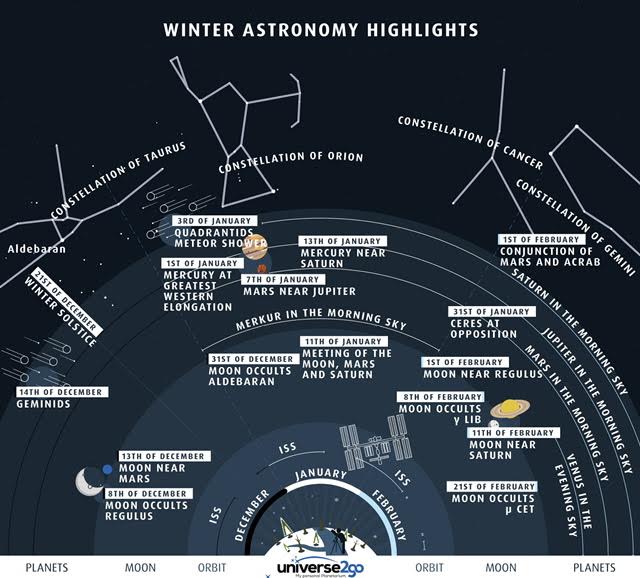
Samain Bare Aspen Moon
Friend Tom Crane found this image. The delights of winter nights.

Samain Bare Aspen Moon
 The great wheel has turned again, moving Orion further down the southwestern horizon in the early morning. The air is cooler here. A Beth Evergreen friend, Alan, came in to the kabbalah class and announced, “Winter is really here. It’s so cold outside!” It was 22. Now in my fourth winter season here I’ve stopped commenting.
The great wheel has turned again, moving Orion further down the southwestern horizon in the early morning. The air is cooler here. A Beth Evergreen friend, Alan, came in to the kabbalah class and announced, “Winter is really here. It’s so cold outside!” It was 22. Now in my fourth winter season here I’ve stopped commenting.
Temperature tolerance is so much about perspective. I saw a meme on Facebook that featured two parka clad folk with frost on the edges of their hoods. “What people in Texas are like if the temperature dips below 80.” A man from Texas wrote, “This is true.” Another posted a photograph of a red bench rest with two snow flakes, “It’s a blizzard in Dallas!”
 Those -40 degree nights at Valhelga during one Woolly retreat. Working out on my snowshoes in the woods behind the library in Anoka, -20 degrees. The moments of -50 degree wind chill. Days with the temperature below zero, many days in a row. Minnesota. Not a lot of snow, but pretty damned cold.
Those -40 degree nights at Valhelga during one Woolly retreat. Working out on my snowshoes in the woods behind the library in Anoka, -20 degrees. The moments of -50 degree wind chill. Days with the temperature below zero, many days in a row. Minnesota. Not a lot of snow, but pretty damned cold.
And, yes, my body has begun to change its reaction, 22 does seem cold. Yet my brain. Nope. T-shirt weather. Rock the sandals and the shorts.
The Winter Solstice, no matter what the temperature, is coming. My favorite time of the year.
Samain Bare Aspen Moon
 Think I’ve figured out my kabbalah presentation. Still a bit rough around the edges but that’s going to be part of it. It’ll be a how to think with the tree of the life as a touchstone example, using the Great Wheel as an instance.
Think I’ve figured out my kabbalah presentation. Still a bit rough around the edges but that’s going to be part of it. It’ll be a how to think with the tree of the life as a touchstone example, using the Great Wheel as an instance.
It’s been a difficult couple of weeks trying to figure out whether or not I’m trying to put the cliched square peg in a round hole. That is, can the Great Wheel be interpreted from within the tree of life’s basic framework? Or, vice versa.
My tentative conclusion right now? Yes, they both speak to the same essence, to a fundamental truth about the nature of reality as we humans experience it. Both abstractions focus us on the dynamic of life arising from the inanimate and returning the borrowed elements to the inanimate at the end of a cycle. We could call it entropy, but entropy does not have the revivifying element of both the tree of life and the Great Wheel.
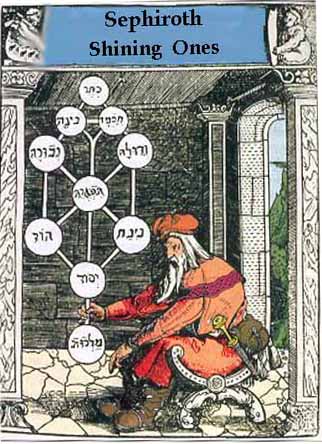 This a crucial difference between a secular, scientific world view and a mystical one. Entropy posits, as I mentioned in a post not long ago, that all things die, including death, I suppose. The Great Wheel and the tree of life challenge that grim metaphysics with an alternative.
This a crucial difference between a secular, scientific world view and a mystical one. Entropy posits, as I mentioned in a post not long ago, that all things die, including death, I suppose. The Great Wheel and the tree of life challenge that grim metaphysics with an alternative.
In the tree of life emanations from the keter, or crown, flow down through the ten sephirot, emerging after a journey through possibilities and limitations, into malchut, the realm of the Shekinah or the feminine aspect of the divine. This is the daily reality you and I experience. Rabbi Jamie uses the illustration of a fountain with metal leaves (the sephirot) that catch the emanations, then direct the flow downward toward malchut. This could be entropic. Divine emanations could flow down to malchut, exist there for awhile, then simply disintegrate, disappear. Or, they could all flow down to malchut until it was filled, then the flow would stop. The heat death of the universe could be seen as such a result for the big bang.
But this fountain flows both ways. Malchut, as Rabbi Jamie explains it, is also a pump and the fountain sends water (divine energy) back up the tree of the life, returning it to the ein sof, the infinite oneness. Repeat until God is repaired.
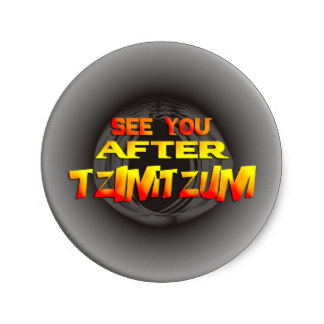 God became fractionated during the tzimtzum, the contraction of divine energy that made the finite possible. This idea is still difficult for me, but I’m just accepting it for the purposes of this presentation. During the tzimtzum the infinite light, ohr, tried to manifest in the finite, filling the space created by the contraction, but the vessel, things, (ein sof = no-things, infinity) could not hold it and shattered. That shattering created all the elements that now make up our universe. (and other universes, too) Trapped inside all of these elements is the ohr. The ascent and descent of divine energy, from the keter to malchut and backup through the sephirot to the keter from malchut, is the way the ohr will once again join with the infinite. How? No clue.
God became fractionated during the tzimtzum, the contraction of divine energy that made the finite possible. This idea is still difficult for me, but I’m just accepting it for the purposes of this presentation. During the tzimtzum the infinite light, ohr, tried to manifest in the finite, filling the space created by the contraction, but the vessel, things, (ein sof = no-things, infinity) could not hold it and shattered. That shattering created all the elements that now make up our universe. (and other universes, too) Trapped inside all of these elements is the ohr. The ascent and descent of divine energy, from the keter to malchut and backup through the sephirot to the keter from malchut, is the way the ohr will once again join with the infinite. How? No clue.
OK. So how does this correlate, if at all, with the Great Wheel? The Great Wheel divides into two halves, a fallow half beginning at Samain and ending at Beltane when the growing season begins. That’s roughly from October 31st to May 1st on the Gregorian calendar, but of course the reality varies by latitude and altitude. The key thing to consider here is a growing time, a time of vitality and, not only vitality, but vitality created from the inanimate materials of soil, air and sun followed by a fallow time when plants die back, when the animate returns to the inanimate.
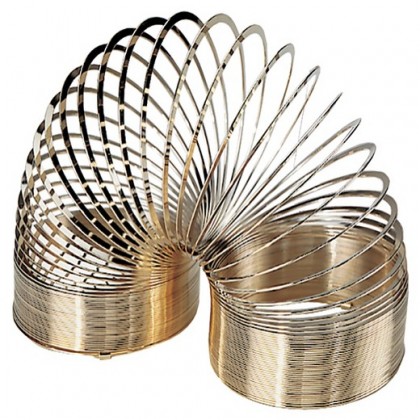 This is a malchutian manifestation, I think, of the ascent and descent and ascent again of divine energy represented by the tree of life. Why? Well, until the divine energy passes through yesod and becomes real in malchut, it is hidden, invisible, just like the vivifying function of the soil and the air and the sun is hidden during the fallow time. Both represent the cyclical nature of things coming into existence from apparent no-thing, then returning themselves to the invisible, the hidden.
This is a malchutian manifestation, I think, of the ascent and descent and ascent again of divine energy represented by the tree of life. Why? Well, until the divine energy passes through yesod and becomes real in malchut, it is hidden, invisible, just like the vivifying function of the soil and the air and the sun is hidden during the fallow time. Both represent the cyclical nature of things coming into existence from apparent no-thing, then returning themselves to the invisible, the hidden.
Whereas the summer solstice could be seen as a major holiday for malchut, so the winter solstice could be seen as a major holiday for the keter and the ein sof. The summer solstice is a celebration of growth and fertility, the winter solstice a celebration of darkness and hiddenness, the depth (or height) of the nine sephirot and their crown.
Now it could be said, and I have said, that the Great Wheel represents cyclical time and that the notion of time itself is a matter of mental organization for the human mind. It could also be said that the very nature of the Great Wheel limits it to malchut since it expresses the seasonal changes of our particular planet. I believe, at least right now, though, that the Great Wheel instead reveals the universal nature of life on our planet, in malchut, as a simulacrum of the energy paths of the tree of life.
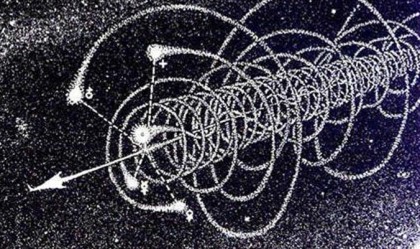 The slinkys I will hand out, tiny one-inch ones, illustrate what I mean. The Great Wheel turns through one year, one orbit around the sun, then repeats and is, in that, cyclical and not chronological. But, if you link this orbit to that one we get a spiral as our rapidly moving planet follows our solar system around the galaxy at unimaginable rates of speed. The Great Wheel then extends in space, in a spiral, this year’s revolution becoming another while the whole planet and its sun captive neighbors push further and further around the Milky Way. And, just to add complexity, as the whole galaxy moves, too.
The slinkys I will hand out, tiny one-inch ones, illustrate what I mean. The Great Wheel turns through one year, one orbit around the sun, then repeats and is, in that, cyclical and not chronological. But, if you link this orbit to that one we get a spiral as our rapidly moving planet follows our solar system around the galaxy at unimaginable rates of speed. The Great Wheel then extends in space, in a spiral, this year’s revolution becoming another while the whole planet and its sun captive neighbors push further and further around the Milky Way. And, just to add complexity, as the whole galaxy moves, too.
Samain Bare Aspen Moon
Found by friend Tom Crane.
Our story
Samain Bare Aspen Moon
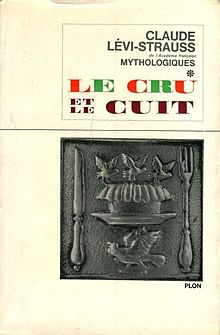
After a very busy week, a good busy with friends and Hebrew, kabbalah and time with Kate, yesterday was a rest day. Wrote, did my workout (which takes a while), napped, had a wonderful lamb supper cooked by Kate, who’s a wizard with meat. Watched some more of the Punisher on Netflix. On seeing that on the TV as she went to bed Kate said, “I don’t like your choice of programs.” “I know,” I said. Eating red meat and watching TV are hangovers from my Indiana acculturation, neither of which would I recommend to my children or grandchildren, but which I also thoroughly enjoy. No excuses.
Admitting to liking television in the crowds in which I tend to run is like admitting you enjoy belching or farting in public. Declassé. And it is, I suppose. My rationale (or, perhaps, as is often the case with rationales, my rationalization) is relaxation, in particular relaxation from a day usually spent in intellectual and physical activity. I love stories and TV, especially right now, is full of good storytellers who use visuals to enhance their storytelling. I’m sure there’s a sophisticated psychology explanation for this habit, but TV serves a purpose in my life. So there.
Thanksgiving this week. I’ve got a Martha Stewart recipe for capon with pancetta and fig stuffing. Which, of course, requires finding a capon, a mystery meat, as I said yesterday, to Colorado butchers. Tony’s Market. I ordered one and I’m going to call them today just to make sure it’s really coming. I did try to find a capon on which to experiment, but the only one I could find was $63.00. Ouch. Thanksgiving will be the experiment.
 I really like cooking, used to do a lot more. It requires mindfulness and produces a meal for others to enjoy. Just popping up from my days of anthropology: The Raw and the Cooked, by Claude Leví-Strauss. In this book the French anthropologist talks about the binary of raw food to cooked, prepared food, seeing the development of cooking as fundamental for the human species, a key movement leading toward civilization. (I’m not going to go into it here, too complex, but if you’re interested in dialectical thinking, the raw-cooked distinction is an example of binary opposition, a distinctively French version of dialectical thought which underlies Leví-Strauss’s idea of structuralism, a short introduction to it is here.)
I really like cooking, used to do a lot more. It requires mindfulness and produces a meal for others to enjoy. Just popping up from my days of anthropology: The Raw and the Cooked, by Claude Leví-Strauss. In this book the French anthropologist talks about the binary of raw food to cooked, prepared food, seeing the development of cooking as fundamental for the human species, a key movement leading toward civilization. (I’m not going to go into it here, too complex, but if you’re interested in dialectical thinking, the raw-cooked distinction is an example of binary opposition, a distinctively French version of dialectical thought which underlies Leví-Strauss’s idea of structuralism, a short introduction to it is here.)
My point in this last paragraph is that cooking is central to being human; so, engaging in it, at any level, links us directly to the story of human evolution. In that way we can look at Thanksgiving, or any big holiday meal, as linking a key step in our change from merely animal to animal with culture, to another key step, the abstraction of particular days, the elevation of particular moments in time, into holidays. The other night I realized that for dogs all days are the same no Tuesdays or passovers or superbowls, no Guy Fawkes or Mexican independence days, rather sequences of day and night, with food and friends, human contact.
 We’re not like dogs in that fundamental sense. As Emerson observed, “The days are gods.” Another binary opposition is the sacred and the profane, like the holy and the secular, ordinary time and sacred time. We imbue, out of our speculative capacity, the passing of time with certain significance. The day we were born. The yahrzeit notion in Judaism, celebrating the anniversary of a death. A day to celebrate the birth of a god, or to remember a long ago war against colonial masters. We identify certain days, a vast and vastly different number of them, as new year’s day, the beginning of another cycle marked by the return of our planet to a remembered spot on its journey.
We’re not like dogs in that fundamental sense. As Emerson observed, “The days are gods.” Another binary opposition is the sacred and the profane, like the holy and the secular, ordinary time and sacred time. We imbue, out of our speculative capacity, the passing of time with certain significance. The day we were born. The yahrzeit notion in Judaism, celebrating the anniversary of a death. A day to celebrate the birth of a god, or to remember a long ago war against colonial masters. We identify certain days, a vast and vastly different number of them, as new year’s day, the beginning of another cycle marked by the return of our planet to a remembered spot on its journey.
 When we merge our speculative fantasies with the chemistry of changing raw food into a beautiful cooked meal, we can have extraordinary times. The natural poetics of wonder join the very earthy act of feeding ourselves to create special memories. Very often on those days we gather with our family, a unit that itself memorializes the most basic human purpose of all, procreation of the species. We don’t tend to think of these most elemental components, but they are there and are sine qua non’s of holidays.
When we merge our speculative fantasies with the chemistry of changing raw food into a beautiful cooked meal, we can have extraordinary times. The natural poetics of wonder join the very earthy act of feeding ourselves to create special memories. Very often on those days we gather with our family, a unit that itself memorializes the most basic human purpose of all, procreation of the species. We don’t tend to think of these most elemental components, but they are there and are sine qua non’s of holidays.
So, cook, pray, celebrate. Laugh. With those you love. If you care to, take a moment to consider these amazing things, too. That we know how to transform a neutered rooster into something delicious, something that will undergo the true transubstantiation, the changing of soil chemicals, the bodies of animals and plants into a human body. That we have the idea of Thanksgiving, or the idea of Hanukkah, or the idea of Labor Day and mark out a chunk of the earth’s orbit as special for those ideas. That we choose to gather on them with our small unit of humanity’s long, long ancientrail of development and critical change and doing so honor all of these elementals.
Fall Harvest Moon

Into Stevinson Toyota yesterday for a Rav4 oil change. Stevinson’s West on the western edge of Denver. The big yellow signs with their dire steep inclines, tight curves warnings go past me now unremarked, except for the occasional realization that I’ve acclimated to mountain driving some while ago.
Stevinson is about 35 minutes away, but the Toyota approach to service appeals to me enough to make the trek. They do what needs to be done to keep the vehicle in good shape. That’s what I want. And, it works. The next oil change will be at the 100,100 mark. Can’t say I like the Rav4, but it gets us from point A to point B, even in winter in the mountains. I do sense an electric car in our future.

Family business meeting at Brooks Tavern over lunch. We’re still absorbing some financial strain from Jon’s time with us, so the budget’s a little tight, but that won’t last forever.
Kate’s doing well with the substantial burden Sjogren’s places on her daily. Though the dryness that is Sjogren’s signature symptom, especially mouth, throat, eyes, is definitely bothersome, the most difficulty for her comes from fatigue. It makes her self-defining upper middle class get’r done energizer bunny approach to life just not possible anymore, except for short periods of time. That imposes a psychological burden that is worse, I think, than the fatigue itself.
Finished the installation of the weather station. It looks great, to my eye, on the loft’s deck. I’ve reacquainted myself with some of the buttons and whiz bangs of the console, but it will require some rtfm to get back to facile with them. The internet connection might be harder because I purchased the link for it back when Vista was the most recent Microsoft OS. We’ll see.
 Been trying to get Boiler Medics, the guy who installed our new boiler, out for a seasonal check of the system. Something’s happening there because they’ve ghosted me for the last few days. This behavior is the mountain way for tradespeople in our stretch of the Front Range; it’s frustrating.
Been trying to get Boiler Medics, the guy who installed our new boiler, out for a seasonal check of the system. Something’s happening there because they’ve ghosted me for the last few days. This behavior is the mountain way for tradespeople in our stretch of the Front Range; it’s frustrating.
Get my new workout today from On the Move Fitness. I’m enjoying getting a new workout every 6 weeks or so. It’s easy to get in a rut with fitness and Deb, owner of OMF with her husband Dave, seems to have a good grasp of my needs. The workouts she devises challenge me, but are not onerous. Lower back pain and my left shoulder pain have largely disappeared thanks to them. Not to mention that knee. I can now get up from a chair using only my legs, an accomplishment that seems small unless you’ve spent a good deal of time unable to do it.
Fall Harvest Moon
 Jon put brackets around the pole for the Vantage pro2 weather station. Secured to the deck now with the anemometer up maybe 20 feet off the ground, I’ll attach the weather station itself to the pole this morning. It’s out there right now though and functioning, sending information back to the console.
Jon put brackets around the pole for the Vantage pro2 weather station. Secured to the deck now with the anemometer up maybe 20 feet off the ground, I’ll attach the weather station itself to the pole this morning. It’s out there right now though and functioning, sending information back to the console.
These are the conditions at 7:20 a.m. this morning, October 15th. Temp outside, 35. Humidity outside, 15%. Barometric pressure 22.60. No wind. No rain or snow.
Next step is to set up the console so I can toggle various data points such as wind chill and dew point. That requires digging back into the manual. After that comes linking the weather station to the internet so I can both share my data and collect it in files for future reference.
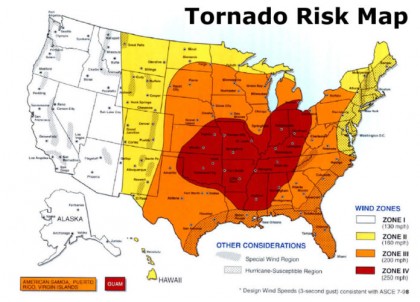 This system is not as important on Shadow Mountain as it was in Andover because we have no orchard or a garden, but it feeds a lifelong interest in the weather, a hobby of sorts. Alexandria, Indiana, where I was raised, is in tornado alley, as is my home state of Oklahoma. The weather could get you.
This system is not as important on Shadow Mountain as it was in Andover because we have no orchard or a garden, but it feeds a lifelong interest in the weather, a hobby of sorts. Alexandria, Indiana, where I was raised, is in tornado alley, as is my home state of Oklahoma. The weather could get you.
A group of Twin Cities’ residents shared weather data and commentary on the Minneapolis Star-Tribune website for a couple of years. I used my weather station for very localized weather reporting. That was fun, but it got onerous. It made me realize how much work it is to forecast or even comment on the weather each day, throughout the day.
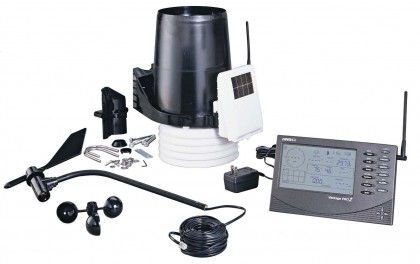
Here in the Rockies our weather changes from valley to valley, from altitude to altitude, mountain to mountain. Many, many microclimates. That means weather reporting and forecasting is often too broad in its sweep to accurately predict what’s going to be happening on, say, Black Mountain Drive.
The weather itself here, unlike the tornadoes of Indiana or the deep, dangerous cold of Minnesota, is not so severe, but the local effects of the weather can be devastating. When the humidity is low, winds are high, and there’s been no moisture for a while, then we get red flag warnings. Wildfire danger goes up and down with these conditions. Since winter is our humid season, it’s usually less worrisome in that regard.
It’s fun to have the console up and the weather station functioning.
Lughnasa Harvest (new) Moon
 Under the category of awe. In passing I noted a reference to butterflies being around in some numbers. One commenter on pinecam.com referred to them as painted ladies migrating.
Under the category of awe. In passing I noted a reference to butterflies being around in some numbers. One commenter on pinecam.com referred to them as painted ladies migrating.
This might have passed in and out of my attention, but I noticed a butterfly on Black Mountain Drive. Curious, I walked up the driveway to the road.
Sure enough, spread out sort of like the cross country runners in Ruth’s meet last night, there were butterflies going toward Evergreen, all of the ones I saw using the open space created by the road as a flight corridor.
I watched for a bit and they kept coming, isolated individuals, groups of two or three, sometimes more, flapping their apparently fragile wings, moving, just in my observation, great distances for their body size.
In Europe they migrate from Africa to Britain, as far as 9,000 miles. In our case they’re headed for New Mexico, Arizona and northern Mexico, just like the snowbirds who leave temperate climes for those warmer stretches of mother earth during the winter.
That such tiny creatures can travel so far, flying the whole way, then turn around and do it again, made me pause for a moment of awe. In retrospect it would have been appropriate to have crowds along Black Mountain Drive, cheering, applauding, “you can do it!”, “all the way to Mexico.”, maybe little sugar stands set out.
Those were the painted ladies on Shadow Mountain.
Lughnasa Eclipse Moon
 The last night of the Eclipse Moon, a disastrous month for North America from the eclipse to its waning moment. The wildfires are still burning in the West from the state of Washington to California, in Oregon and Montana and Idaho. Harvey and Irma related disaster cleanup has only begun. The same in southern Mexico for the victims of the 8.1 earthquake. Jose is still pounding around in the Atlantic and Maria, now a category 5, has just shattered Dominica, Guadeloupe, and is headed for Martinique and Puerto Rico. It’s not the apocalypse, no, but for those whose homes and forests are on fire, under water, battered by wind or destroyed by the movement of the earth, it may as well be.
The last night of the Eclipse Moon, a disastrous month for North America from the eclipse to its waning moment. The wildfires are still burning in the West from the state of Washington to California, in Oregon and Montana and Idaho. Harvey and Irma related disaster cleanup has only begun. The same in southern Mexico for the victims of the 8.1 earthquake. Jose is still pounding around in the Atlantic and Maria, now a category 5, has just shattered Dominica, Guadeloupe, and is headed for Martinique and Puerto Rico. It’s not the apocalypse, no, but for those whose homes and forests are on fire, under water, battered by wind or destroyed by the movement of the earth, it may as well be.
Awe is not confined to the benign, the amazing and wonderful. Each of these disasters, both in their gestalt and in their particulars, and as a collection of events, is awesome. They show the limits of human preparation, of human intervention. We are not, even with our nuclear weapons and our space station and our icebreakers, more than bystanders when these acts of earth strike us. We even have a name for them, force majeure, enshrined in insurance policies.
Nations and civilizations rise and fall, but earth, air, fire and water continue in their eternal way, or, at least as long as the earth herself lasts, to do what they want, when they want, where they want.
We are, in the end, Ozymandias, look on our works, ye Mighty, and despair.
Lughnasa Eclipse Moon

That old moon, the one that occulted our star, has two days left in its cycle. It will give way to the first moon of this new fall, this moon that oversaw the journeys of millions to watch it work in the daylight. It also presided over Hurricane’s Harvey, Irma, Jose and Katia, over the 8.1 earthquake in southern Mexico and the fiery end to many forests in the U.S. West. Earth, Air, Fire and Water. What will this next moon bring?
I’m still feeling a sense of exhaustion from Saturday night, not unusual I guess. Seventy after all. The burns I got on my right hand making the sugar cream pies last Tuesday are still healing. Again, seventy year old skin. This exhaustion feels ok, part of the third phase.
Went to bed last night in a mild funk, exhaustion will do that, allow negative moods to take hold, grip me. They’re like infections, sudden and pervasive; but usually, if I can find their source, a triggering event, then I can quiet the infection, let it dissipate. It takes brutal self-honesty.
 Yesterday I traced the funk back to an e-mail I sent out late Saturday night thanking all the main participants in the Evergreen Forum. Two folks responded quickly, thanking me, too, and I realized, as I searched for the source of the mood, that I wanted more of those and when they didn’t come, I wondered why not? It was that wondering that created the bad mood. In others words I had poisoned my own well, then drunk from it. Well, I realized, that’s silly. Take the compliments, move on. So, I did.
Yesterday I traced the funk back to an e-mail I sent out late Saturday night thanking all the main participants in the Evergreen Forum. Two folks responded quickly, thanking me, too, and I realized, as I searched for the source of the mood, that I wanted more of those and when they didn’t come, I wondered why not? It was that wondering that created the bad mood. In others words I had poisoned my own well, then drunk from it. Well, I realized, that’s silly. Take the compliments, move on. So, I did.
Rosh Hashanah begins Wednesday evening, erev Rosh Hashanah. This is a pensive time in the Jewish calendar. As the old year ends, Tishrei 1 (Sept. 21st) ushers in the Jewish year 5778. Rosh Hashanah, according to Chabad.org, means head of the year and celebrates the birthday of the universe and in that process, the day of the creation of Adam and Eve.
After it there are then 10 days to complete a cycle of seeking forgiveness from others so God can be approached on Yom Kippur for forgiveness. At the end of Yom Kippur the book of life is sealed for 5777 and written in the book will be all those sins for which forgiveness has not been received.

This is a wonderful way because it encourages an annual cleaning of the slate, then beginning a new year ready to live fully, unburdened by baggage from the year before. Whether or not you accept the metaphysics, the practice itself is healthy.